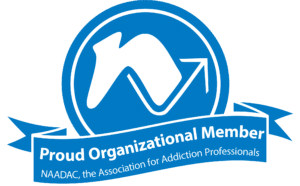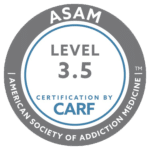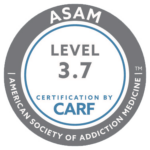A panic attack is an unexpected and extreme feeling of fear that occurs without an obvious cause or any present danger. This feeling can be so overwhelming that you may become frozen in one spot and develop a shortness of breath, even thinking that you may be dying. Your heart may begin to pound, and many people have said that they felt as if they were going insane.
While panic attacks don’t necessarily occur over and over again, recurrence does happen to some people. If someone is experiencing regular panic attacks, it is often because they are being triggered by a specific event. For example, someone might have a panic attack after crossing a bridge or right before making a speech in front of a group of people because a similar situation caused panic attacks in the past. In response, they begin to feel as if they are being cornered, and their flight-or-fight responses kick in, thus resulting in a panic attack.
The fact that you experienced one or two panic attacks doesn’t mean that you aren’t healthy, but you could have panic disorder, depression, or social phobia. It doesn’t matter what causes your panic attacks; there is a treatment for them. The psychological community has strategies that can either eliminate or reduce your panic attack symptoms and allow you to gain control of your life again.
The Signs and Symptoms of Panic Attacks
The following signs and symptoms of panic attacks usually appear suddenly and then reach their peak in 10 minutes. Most attacks last between 20 and 30 minutes, but sometimes, they can last as long as an hour. A panic attack can occur anywhere; for example, it can occur when you are walking down the street, waiting for a bus, or sitting at your desk at work.
The following are typical panic attack symptoms:
- The fear that you are about to die
- Hot flashes
- Cold flashes
- Numbness or tingling in your fingers
- Feeling as if you are going to faint
- Nausea
- Sweating
- Feeling as if you are detached from your body
- Feeling as if you are going to choke
- Trembling
- Pain in your chest
- A pounding heart
- Having trouble breathing
Do You Have Panic Disorder?
If you have had one or two panic attacks in your lifetime, this doesn’t mean that you are going to develop panic disorder. You will be diagnosed with this disorder if you regularly experience panic attacks that cause you to become anxious about having another episode and if your panic attacks also cause you to live your life differently.
You may have panic disorder if you experience any of the following:
- You have regular panic attacks that aren’t triggered by any particular thing or event.
- You are constantly worried that you are going to have a panic attack.
- You choose to do things differently than you have done in the past, such as refusing to go to a particular area because you previously had a panic attack there.
Panic attacks don’t necessarily last for very long, but even the short ones can affect you for an extended period of time. This disorder is emotionally draining. The memories of past panic attacks not only cause you to lose confidence in yourself but also interrupt important things in your life. In time, you may begin to experience the following symptoms as a result.
- Anticipatory anxiety: In the beginning, you may still feel like your old self when you are not having a panic attack. As time passes, however, you begin to lose the ability to feel comfortable with yourself between attacks, and you start feeling anxious and tense all the time, afraid you are going to have a panic attack. Because you are now afraid of being afraid all the time, you start to feel paralyzed.
- Phobic avoidance: This is when you avoid specific places or events because you believe that they were the cause of your panic attacks. You may also decide to avoid a place because you believe it would be difficult to run away or escape if necessary. Phobic avoidance becomes agoraphobia if you allow it to take over your entire life.
Panic Disorder and Agoraphobia
Agoraphobia is an anxiety disorder that causes you to avoid places you fear will make you feel trapped, threatened, or embarrassed. You may feel unsafe in open outdoor spaces, a crowd, or public transit. If your agoraphobia is severe, you may be afraid to leave your home.
Agoraphobia is often linked with panic disorder. For example, you may develop agoraphobia after experiencing a panic attack in a crowded place or in an area where you feel trapped or unsafe. The fear of having a panic attack in an unfamiliar or threatening place starts to intensify, and you may begin to feel the need to avoid even more places and situations. Some of the things people with agoraphobia begin to avoid include the following:
- Going outside without being accompanied by a trusted person
- Alcohol, sugar, caffeine, and medication that may increase the likelihood of a panic attack
- Exercise that may cause a panic attack
- Parties or other gatherings where someone would be embarrassed to have a panic attack
- Trains, airplanes, or vehicles
- Crowded places
What Causes Panic Attacks and Panic Disorder?
The medical community doesn’t exactly know why people experience panic attacks or develop panic disorder, but experts say that more than one member of the same family tends to have the condition. The disorder also often presents itself after a major life transition. For example, graduating from college and starting a first job, getting married, or having a baby are all common times when panic disorder can appear. Severely negative events may also cause the disorder, such as the death of a spouse, the loss of a job, or a divorce.
Panic attacks have also been known to be caused by physical ailments. Therefore, if you are experiencing panic attacks, make sure that you see your doctor so that they can rule out the following conditions:
- Withdrawal from medication
- The use of caffeine, cocaine, or amphetamines
- Low blood sugar
- An overactive thyroid gland
- Mitral valve prolapse, or when a valve fails to close properly
How Do You Treat Yourself for Panic Attacks?
Your panic attacks may make you feel like you are totally out of control, but there are a number of techniques and lifestyle changes that can help you feel better and bring yourself back to a more comfortable place:
- Take time to learn about your condition: If you spend some time reading about panic and anxiety, being better informed can help relieve your fears. Topics to read about include the flight-or-fight response, panic disorder, and anxiety. One thing you will discover is that the feelings you experience during a panic attack aren’t unusual, and they don’t mean that you are losing your mind.
- Don’t smoke or drink alcohol or caffeine: If you are susceptible to having panic attacks, these substances are known to contribute to them. If you are taking a medication that contains a stimulant, you may want to consider an alternative.
- Focus on your breathing: During a panic attack, you may begin to hyperventilate. This is when you start to breathe very fast, causing you to exhale more than you inhale. This leads to a lower level of carbon dioxide, which narrows your blood vessels so that your brain doesn’t receive enough blood. The result is lightheadedness or even a loss of consciousness. By deep breathing, you can relieve these symptoms. If you learn to control your breathing, you can prevent the sensation of feeling out of control.
- Learn relaxation techniques: You can strengthen your body’s relaxation response by engaging in activities such as yoga, meditation, and progressive muscle relaxation to combat panic and anxiety.
- Visit with friends and family: You can make your feelings of anxiety worse by remaining isolated. The best thing to do when you feel anxious is seek out your friends or family members. If your loved ones don’t live near you, look for ways to meet some new people and expand your social circle locally.
- Exercise on a regular basis: One of the best ways to relieve anxiety is to exercise for at least 30 minutes a day. You can split up this time into different sessions by exercising for 10 minutes in the morning, 10 minutes in the afternoon, and 10 minutes after dinner. The best type of exercise is the type that requires you to move both your arms and legs, such as walking, swimming, dancing, or running.
- Get a good night’s sleep every night: Not getting enough sleep only makes anxiety worse. Aim for between seven and nine hours of sleep each night so that you wake up feeling recharged and well-rested.
What Is the Treatment for Panic Attacks and Panic Disorder?
If you are suffering from panic attacks, panic disorder, or agoraphobia, the best thing you can do for yourself is seek the following professional help:
- Cognitive behavioral therapy: Cognitive behavioral therapy has been shown to be an effective treatment for panic disorder. This therapy is based on faulty thinking patterns and destructive behaviors. With therapy, you can learn better ways to deal with your anxieties.
For example, your therapist might ask you what would happen if you began to experience a panic attack while you are driving down the street. The worst thing that could happen would be that you would need to pull over to the side of the road, but you wouldn’t have to crash your car, and you wouldn’t have a heart attack. Now that you can see that nothing horrible will happen in this instance, you learn that experiencing a panic attack is not nearly as frightening as you thought it would be. You can apply this technique whenever you begin to have panicked thoughts.
- Exposure therapy: This is considered to be a highly effective behavioral therapy for anxiety disorders. A therapist guides you through the things that make you anxious, but this process occurs in a safe space. You begin to experience your anxious feelings during the session, but you learn how to cope with them. The therapist “exposes” you to the unpleasant feelings by asking you to hold your breath. As you begin to feel the familiar feelings of panic, it isn’t as severe as it was the last time, and the fear continues to lessen each time that you perform this exercise. You also begin to feel as if you are gaining control of yourself in this situation.
- Exposure therapy for the treatment of panic disorder and agoraphobia: This therapy can also be used to treat panic disorder and agoraphobia. You will learn that you can control your emotions and that the situation you were so terrified of really wasn’t as scary as you thought it would be.
Which Medications Treat Panic Attacks and Panic Disorder?
Medications are not a cure for panic attacks or panic disorder, but they can be used to control or reduce your symptoms. They are especially helpful if your case is particularly severe, but they should not be your only source of treatment. When medication and specific therapies are combined to treat panic disorder or panic attacks, you have the best chances of overcoming your condition. Some of the medications that may be prescribed to help you include the following:
- Antidepressants: Be aware that antidepressants can take as long as six weeks before you notice that they are working. The most common medications that therapists prescribe for panic disorder or panic attacks include Celexa, Lexapro, Paxil, and Prozac.
- Benzodiazepines: Benzodiazepines work much faster than antidepressants. They can be taken after you begin to experience a panic attack, and they will begin to relieve your symptoms within 30 minutes. Some common types of benzodiazepines include Ativan, Valium, Klonopin, and Xanax.
Granite Recovery Centers
You don’t have to suffer in silence. At Granite Recovery Centers, we can treat you if you are concerned that you have panic disorder, and we can be the advocate you need to help you get your life back on track again.








